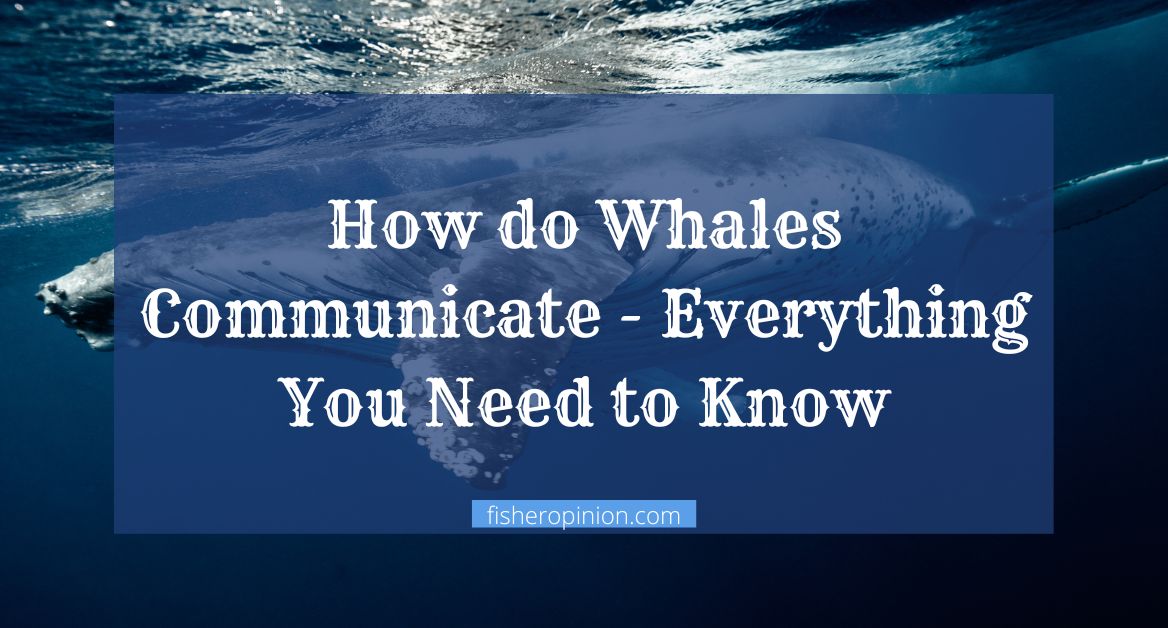Whales are one of the many fascinating beings of the sea world. They are massive in size, calm, and really beautiful as well. But ever wondered about how do whales communicate with each other under the water?
They mostly use noises to communicate with various noises, whistles, and even calls, which are quite fascinating. But not all noises are for communication as the clicks are their way of navigating their path.
Let’s check out a more in-depth discussion about how whales communicate below. We’ll cover everything from the sounds that they make to the frequencies, different types of communication, interaction, and much more.
What Sound Does a Whale Make
It’s no secret that whales communicate by making sounds. But not every sound is meant for communication purposes. So, it’s a good idea to learn about the sounds that they make and what they mean before we jump into a detailed explanation of how whales communicate.
The sounds of whales can be divided into 3 types. These are clicks, whistles, and pulsed calls, which are all used in different scenarios. Clicks are typically for navigation purposes only and lots of evidence backs this up. As for whistles and pulsed calls, they are believed to be only for communications.
How do Whales Communicate Over Long Distances
The sea world is a huge place and it’s a very big mystery for us to know most of it. However, the sea creatures have a way of communicating with each other regardless of the seemingly infinite area. For whales, they communicate through complex sounds over long distances.
They make noises with their larynx, air sacs, & vocal cords, and that allows them to communicate over a long distance. Blue whales are considered to be exceptionally good at long-distance communication.
What is Whale Communication Called
There is no scientific name for whale communication yet. However, it’s apparent that they use many sounds to communicate. Mostly, they use whistles and pulsed calls to do that, and it gets them connected to the huge sea.
The whistles and pulsed calls travel very far in the water world, and it’s super effective as it helps the mega sea creatures communicate.
How Do Whales Use Echolocation
Echolocation allows sea creatures to navigate through the deep seas very easily. Whales and dolphins use this technique all the time to get an awareness of their surroundings.
This technique is basically achieved by sending a specific sound and it bouncing off of objects letting the whale know about the surrounding objects. They send a clicking noise, which lets them navigate through the darkest and deepest seas without any issue.
How Far Can Whale Communicate
Whales don’t necessarily have the best vision among all the sea creatures. In fact, it can only see around 10 meters around them, which is pretty limiting for such a huge being.
However, they can communicate from over 4 kilometers into the sea, which is pretty astounding. That is through their special dialect, which helps them survive the world of water.
Do Whales Interact With Humans
Most people think that whales are just a bigger version of dolphins; therefore, they are no risk to humans. While it’s true that there are rarely any cases where whales attack humans, they typically don’t interact with humans.
And that’s why you don’t see them near humans that much. They like to keep themselves far from humans. However, if they are close to humans, they don’t attack and do their best to avoid any conflicts.
Can Whales Feel Human Touch
Whales can definitely feel the human touch and it doesn’t even matter where you touch them. They have nerves all over their body, which lets them pick up any touch sensation pretty easily.
They also have sensitive areas on their bodies as well. Those include their genitals, head, belly, etc. and they will feel your touch more in those places.
Can Humans Hear Whales Communicate
Humans can only hear one part of whales’ communication. That is the higher frequency part when whales make a sound. However, it’s important to know that most of their communication noise is of very low frequency.
If you know about sound frequencies, you probably know that humans can only hear a certain range of frequencies. But whales make the sound below that range of frequency. And that’s why humans can’t hear whales communicate fully.
How Do Whales Make Sound Underwater
Whales have vocal cords that can make sounds and they use special kinds of techniques and their body parts to produce the unique sound that they make to communicate with each other or navigate in the sea world. This is mostly known as the u-fold vibrates and produces low-frequency sound.
The sound that they produce underwater can travel very far. However, humans can’t pick up that sound as it’s below their capacity of hearing range for them.
How Far Do Whale Sounds Travel
This is probably one of the most fascinating things about whales. Their low frequencies travel over 10 thousand miles, which sounds unreal. But they have such an ability to produce the low-frequency sound that travels that far.
Whale Sound Frequency
The frequency of the sound that whales make is typically between 30 Hertz (Hz) to about 8,000 Hz. However, in the case of the lower frequency, it’s the main part that they use to communicate with each other. But it’s a matter of fact that humans can’t hear that part.
The high-frequency sounds can be heard, which is known as singing. That falls under surface behavior for the whales, and it’s undoubtedly one of the coolest things to experience.
Last Words
Now, you should have a fairly decent idea about how do whales communicate and a lot more interesting facts about them. There’s no doubt that whales are fascinating animals that are nothing but friends to humans. But the pollution, environmental change, and rise in temperature are hurting them on a large scale. We should do our best to save these giant lovely beings.


